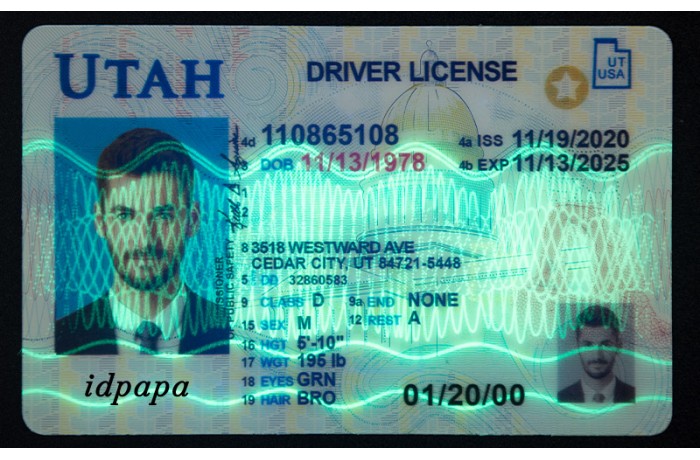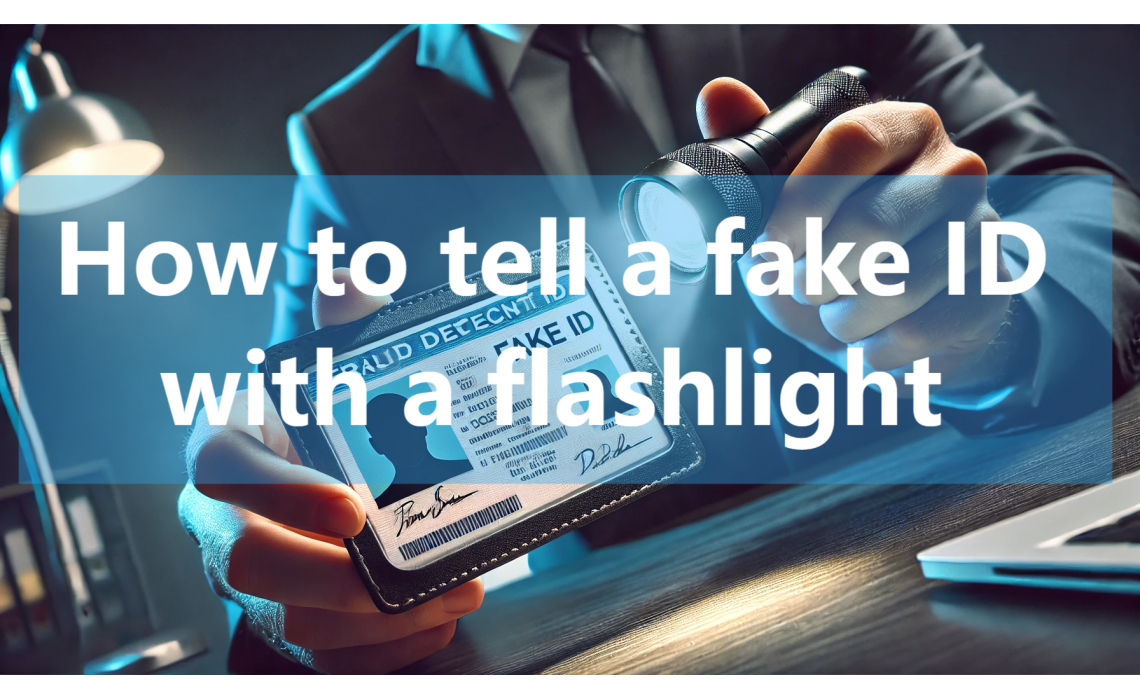How to tell a fake ID with a flashlight
How to tell a fake ID with a flashlight

Detecting fake identification (ID) cards is a critical responsibility for professionals in various industries, including hospitality, retail, and security. One effective tool in this endeavor is a flashlight, which can help reveal inconsistencies and security features that are not easily visible under normal lighting conditions. This comprehensive guide explores how to utilize a flashlight to identify fake IDs, detailing the specific features to inspect and the techniques to employ.
✅Understanding the Importance of Detecting Fake IDs
The proliferation of fake IDs poses significant challenges, particularly in sectors that regulate age-restricted products and services. Businesses that fail to identify fraudulent IDs may face legal penalties, financial losses, and reputational damage. Therefore, equipping staff with the knowledge and tools to detect fake IDs is essential for compliance and community safety.
✅The Role of a Flashlight in ID Verification

A flashlight, especially one equipped with ultraviolet (UV) capabilities, is instrumental in verifying the authenticity of ID cards. It allows inspectors to examine various security features embedded within IDs, such as holograms, microprinting, and UV-reactive elements, which are challenging to replicate accurately in counterfeit documents.
✅Key Security Features to Inspect with a Flashlight
1.Holograms and Overt Images
Authentic IDs often incorporate holographic images that change appearance when viewed from different angles. By shining a flashlight at various angles, you can observe these holograms:
○Presence and Quality: Genuine holograms are intricate and shift colors or images when tilted. Counterfeit fake IDs may have static or poorly replicated holograms that do not exhibit the same dynamic properties.
○State-Specific Symbols: Many IDs feature holograms of state seals, flags, or emblems. Verify that these symbols match the issuing state and are consistent with known authentic IDs.
2.Laser Perforations
Some IDs utilize laser perforation to create patterns or images visible when backlit:
○Backlighting Technique: Hold the ID up to a flashlight to check for precise perforations forming recognizable patterns or symbols. Inconsistencies or absence of these features may indicate a fake ID.
○Clarity and Precision: Authentic laser perforations are clean and uniformly spaced. Blurry or irregular perforations suggest counterfeiting.
3.Ultraviolet (UV) Features
Many fake IDs include elements that react under UV light, such as hidden images or patterns:
○UV Light Examination: Using a UV flashlight, illuminate the ID to reveal any embedded UV-reactive features. Genuine IDs will display specific patterns or symbols unique to the issuing authority.
○Absence or Poor Quality: If the ID lacks UV features or they appear poorly replicated, it may be counterfeit.
4.Microprinting
Microprinting involves tiny text or patterns that are difficult to reproduce:
○Magnification: While a flashlight aids in illumination, using a magnifying tool in conjunction can help inspect microprinted areas. Authentic IDs will have clear, legible microprinting, whereas fakes may have smudged or missing details.
5.Laminate Quality
The laminate layer protects the fake ID and often contains embedded security features:
○Surface Inspection: Shine the flashlight across the surface to detect imperfections like bubbles, peeling, or uneven texture, which are common in counterfeit IDs.
○Embedded Features: Some laminates include holographic elements or UV-reactive fibers. Ensure these are present and consistent with authentic IDs.
6.Ghost Images
A smaller, semi-translucent version of the holder's photo may be present on the ID:
○Visibility: Use the flashlight to enhance the visibility of the ghost image. Its absence or poor quality reproduction can indicate a fake ID.
7.Laser Embossing
Some IDs feature laser-embossed text or images that are raised and tactile:
○Tactile Inspection: Gently run your finger over the embossed areas while illuminating them with the flashlight. Authentic embossing will feel distinct and be well-defined.
✅ Step-by-Step Guide to Using a Flashlight for fake ID Verification
1.Initial Inspection
○Visual Check: Begin by examining the fakeID under normal lighting conditions. Look for obvious signs of tampering, such as mismatched fonts or misaligned text.
○Feel the ID: Authentic IDs are made from specific materials that have a particular weight and flexibility. Anomalies in texture or rigidity can be red flags.
2.Flashlight Examination
○Standard Flashlight: Use a regular flashlight to inspect holograms, laser perforations, and laminate quality.
○UV Flashlight: Switch to a UV flashlight to reveal ultraviolet features and verify their authenticity.
3.Feature Verification
○Compare with Known Authentic IDs: If possible, have a reference fake ID from the same issuing authority to compare security features.
○Cross-Check Information: Ensure that the visible information aligns with the embedded security features (e.g., holograms matching the state emblem).
4.Consult Resources
○ID Reference Guides: Utilize up-to-date guides that detail the security features of IDs from various jurisdictions.
○Training and Tools: Invest in training programs and tools designed for ID verification to enhance detection capabilities.
✅ Limitations and Additional Considerations
●High-Quality Counterfeits: Some fake IDs like idpapa shop are sophisticated and may pass flashlight inspections.
●Technological Aids: Consider using electronic ID scanners that can detect anomalies not visible to the naked eye.
●Legal Implications: Be aware of the legal responsibilities and liabilities associated with accepting fake IDs.
Conclusion
Utilizing a flashlight to inspect IDs is a practical and effective method for detecting common signs of counterfeiting.


